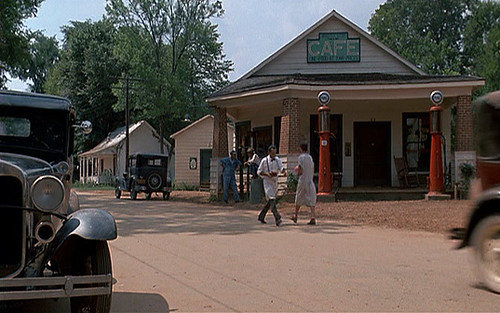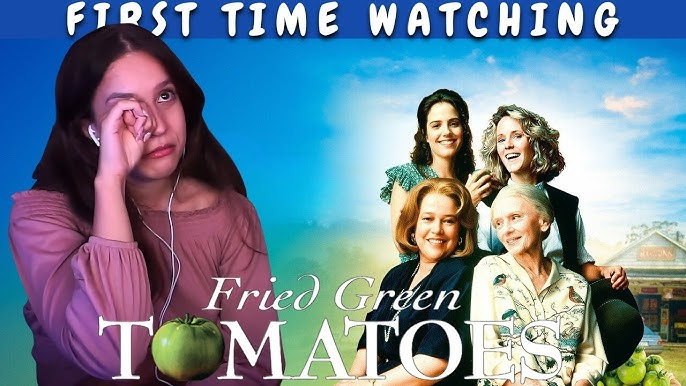
A Culinary Star Born from Cinema
Before 1991, fried green tomatoes were not widely recognized as a Southern specialty. In fact, the dish had deeper roots in Midwestern and Jewish American cooking—references date back to an 1877 Chicago newspaper and a 1919 Jewish cookbook. But the release of Fried Green Tomatoes on January 24, 1992, changed everything—suddenly, these tangy, crispy slices were inescapable symbols of Southern identity, making their way onto menus across the region.
The Kitchen as a Feminist Arena
In Fried Green Tomatoes, food is never just sustenance—it’s survival, rebellion, and sisterhood.
-
For Idgie and Ruth, the Whistle Stop Café is not just a business; it’s a safe haven in a segregated and patriarchal society. Their meals become a quiet form of resistance and economic independence.
-
Sipsey, the café’s head cook, never needs to speak her power into existence. Her food nourishes a town—and carries the weight of generations, cultural memory, and social justice.
-
Evelyn Couch, at first emotionally detached and self-critical, slowly transforms when she begins to appreciate and cook meals—not as deprivation, but as shared joy and belonging.
Food in this film is a tool of storytelling. Memory and meal are inseparable—through meals, characters revisit their pasts and redefine themselves.
Food as a Storytelling Device

Every meal in Fried Green Tomatoes contributes to narrative and character:
-
Fried green tomatoes symbolize resourcefulness and comfort. Born from the practical need to use under-ripe produce, they become signature dishes that represent the film’s emotional and relational threads.
-
Barbecue plays a pivotal narrative role in the film’s most suspenseful scene—darkly satirical, morally charged, and revealing of hidden power dynamics within Whistle Stop society.
Through food, the kitchen becomes a courtroom, the café becomes courtroom and community both, and meals become metaphors for memory, survival, and self-definition.
The “Hollywood Effect” on Food and Culture
The film’s cultural power extended well beyond the story. Southern restaurants—from Irondale, Alabama (flagged as the real-world inspiration for Whistle Stop Café) to major urban centers—saw huge spikes in fried green tomato orders, sometimes using 60–70 pounds of green tomatoes per weekday. It became common to see the dish paired with creative sauces, upscale ingredients, and served at weddings and gourmet brunches—years before the film, such dishes were rare or unremarkable.
By the late 1990s, the film had effectively rewritten culinary history: fried green tomatoes became shorthand for Southern hospitality and cultural nostalgia.
Film as Feminist Allegory: Food and Freedom
Recent scholarly interpretations highlight the film as a classic of feminist cinema. It creates layered female characters who defy gender norms and who use cooking—traditionally considered a domestic, feminine act—as a means of empowerment. Costume and food represent gender codes: Idgie’s rugged attire and fiery fried tomatoes contrast with Ruth’s femininity and measured meals—both women forging identity through shared food culture rather than submission to social expectation.
Evelyn’s food journey mirrors emotional awakening. Her relationship with food shifts from guilt to pleasure, reflecting a broader reclamation of her identity and agency.
Why It Still Resonates in 2025
-
For LGBTQ+ and feminist audiences, the film’s coded romance between Idgie and Ruth, expressed most vividly in their shared kitchen and meals, offers a powerful narrative of emotional authenticity without labels.
-
For families and fans, Fried Green Tomatoes remains a comfort film. Many viewers report returning at different life stages, each time finding new meaning in shared meals and character arcs—just as Redditors describe re-watching it over decades and still crying afresh.
-
For food culture, the film remains a case study in how media can reshape tradition. Today, chefs riff on the titular dish with goat cheese, remoulade, chutney, or benne flour—but the emotional core remains true to the film’s spirit: meals as memory, kitchen as love.
Final Thoughts: Food That Feeds the Soul
Fried Green Tomatoes isn’t just a culinary click-bait film—it’s a testament to how food can carry themes of survival, love, rebellion, and community. It transformed a modest recipe into a symbol of heritage, while giving voice to characters who found communion through cooking.
Food in this film becomes emotional architecture. Each bite connects characters—and the audience—to memory, liberation, and hope. In Whistle Stop, meals were far more than nourishment. They were a quiet revolution.
